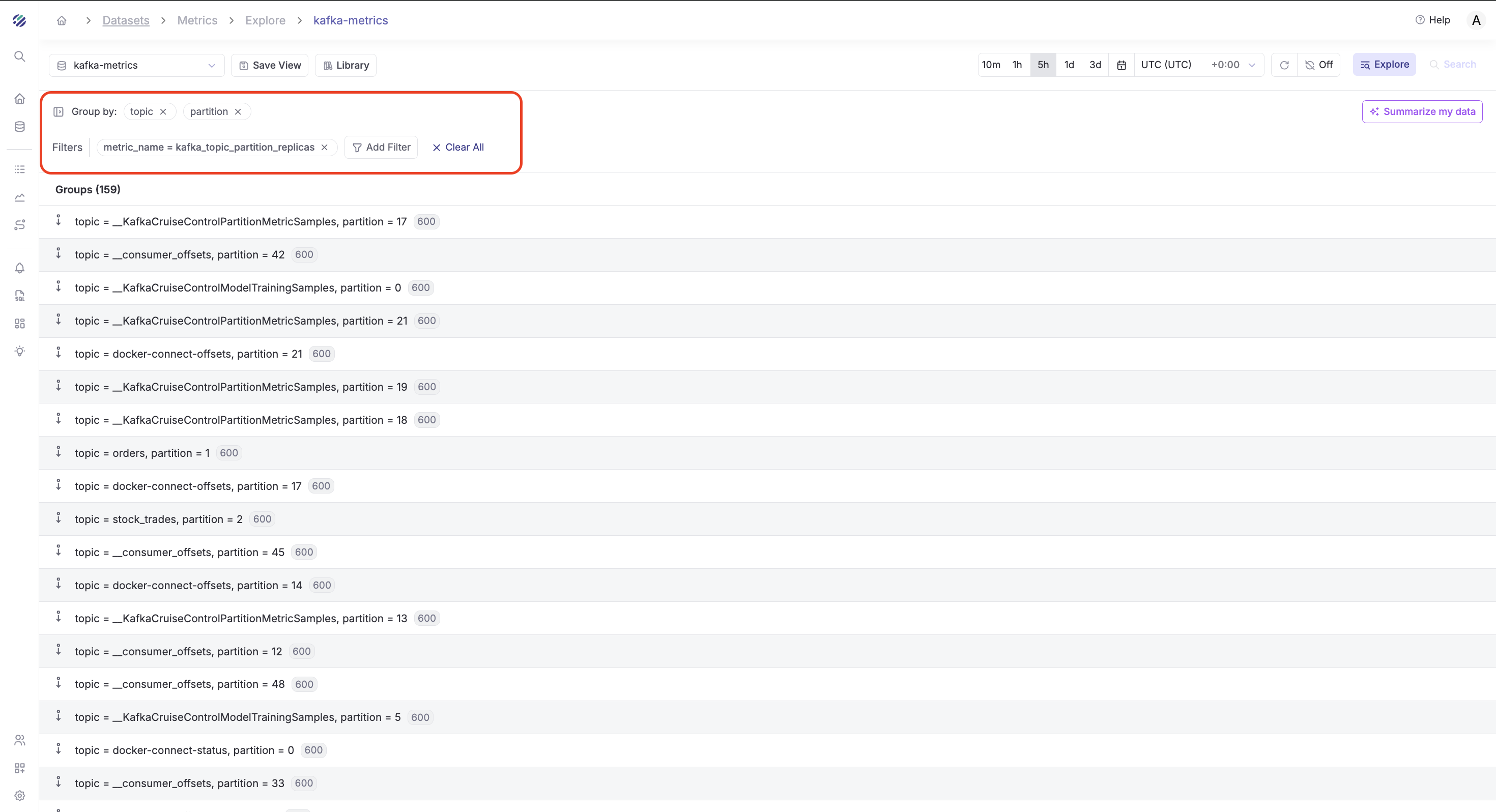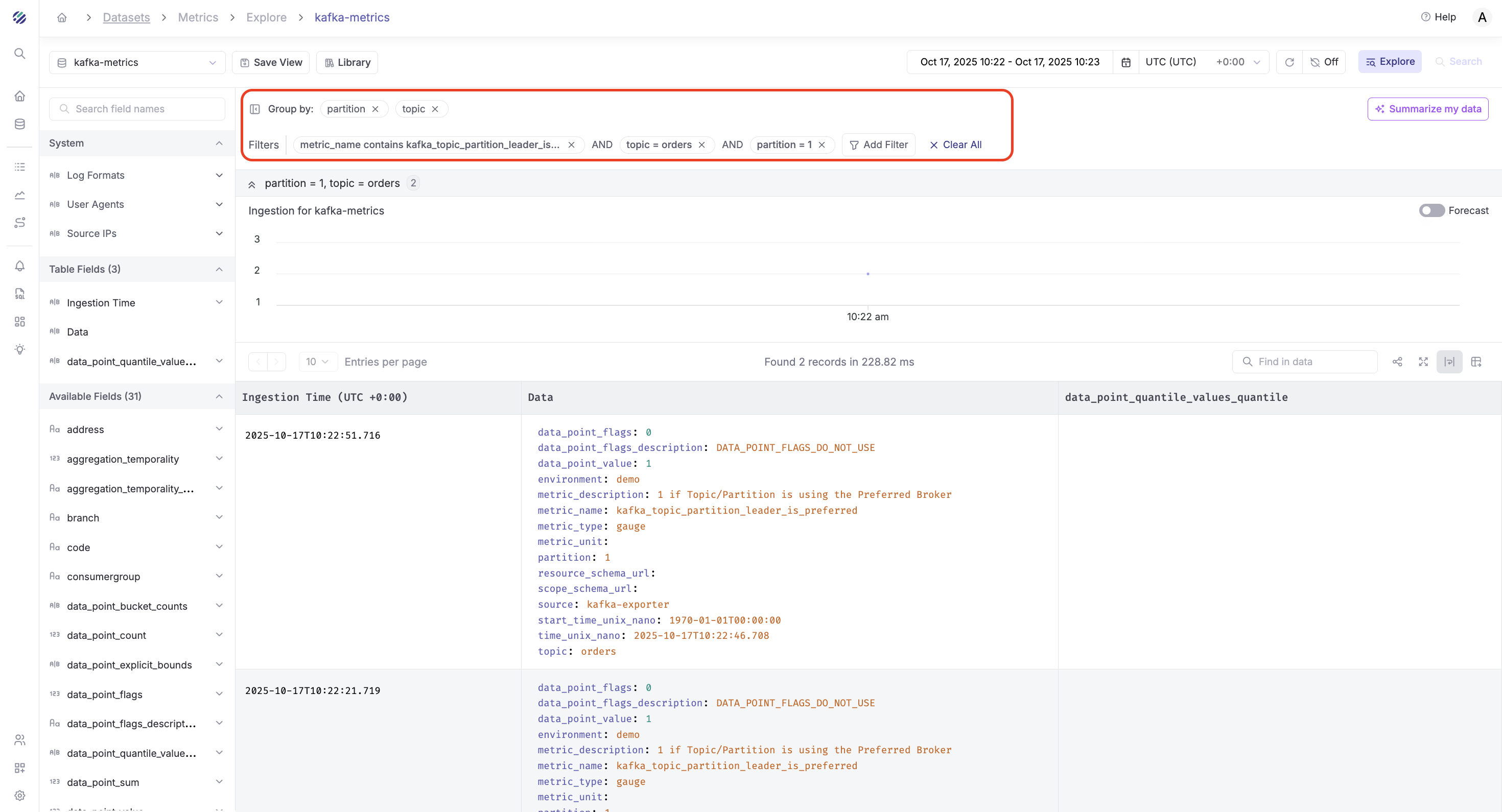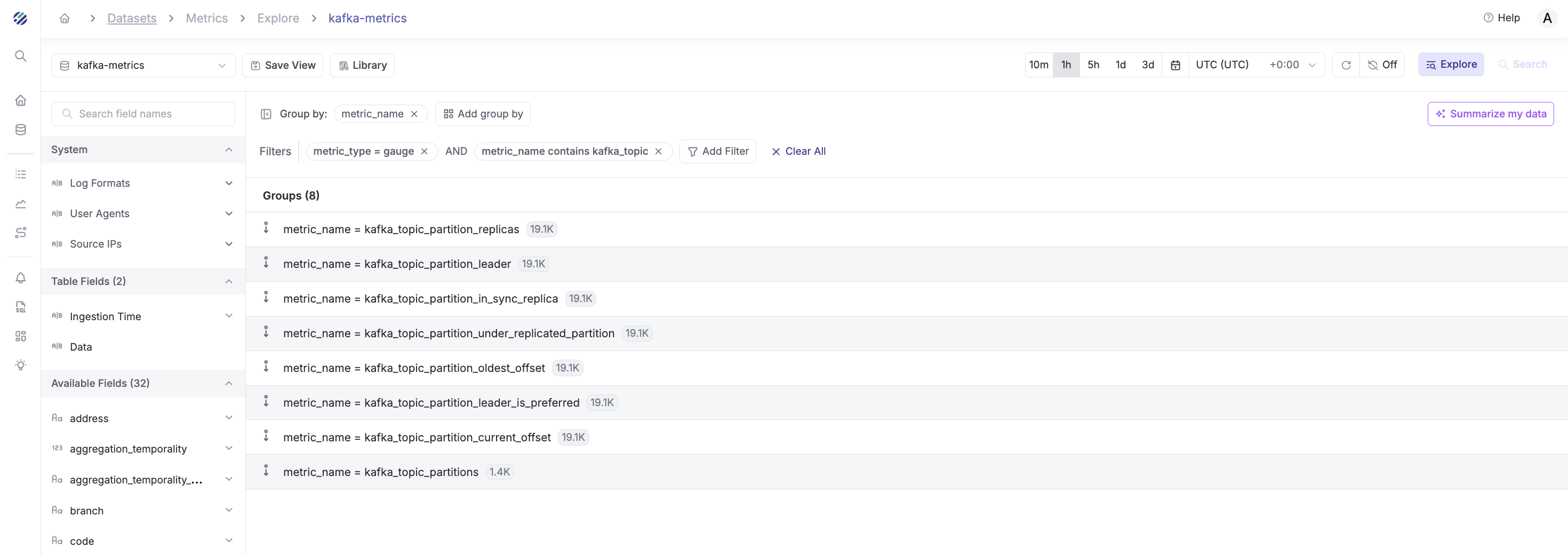When Your Kafka Consumer Goes Silent
It's 2 AM. Your Kafka consumer has stalled. Consumer lag is climbing into the millions. Customers are reporting delays. Your logs show nothing useful, and changing the log level requires a deployment approval that won't come until morning.
If you're operating Apache Kafka at scale, you know this scenario all too well. A consumer group stops progressing, and you're left playing detective with insufficient clues. The pressure builds as you manually dig through offsets, parse logs, and inspect messages, hoping to find the needle in the haystack before the business impact escalates.
This operational burden drains valuable engineering time that could be spent building features that matter.
Why Kafka Troubleshooting Takes So Long
The real challenge with Kafka operations isn't detecting that something broke—monitoring tools handle that well. The problem is answering the critical questions:
- Why did it break?
- When did it start?
- What changed?
- Who is impacted?
Consider the "poison pill" scenario as one of the most frustrating Kafka issues. A single malformed message brings an entire consumer group to its knees. These scenarios happen more often than you'd think:
- Schema evolution issues: Data format changes that break consumers
- Encoding problems: Character set mismatches or size violations
- Business logic failures: Messages that pass schema validation but fail processing
Even with a schema registry and strict enforcement, you're not protected against semantic errors or application-level processing failures that occur after successful deserialization.
Traditional debugging requires manually hunting through logs, inspecting offsets, and examining messages one by one, a process that can take hours for topics with millions of messages.
Comprehensive Kafka Monitoring with Parseable
This is a two-part tutorial that shows you how to set up complete Kafka monitoring using Parseable and Kafka Exporter. You'll learn to:
- Export Kafka metrics using Kafka Exporter to Parseable
- Explore your data with simple filters and group-by operations
In Part 2 of this tutorial, we'll explore the following:
- Query metrics using SQL for deep analysis
- Build visualizations and dashboards for real-time monitoring
- Set up intelligent alerts and investigate issues when they occur
By the end, you'll have a production-ready Kafka monitoring solution that reduces troubleshooting time from hours to minutes.
Prerequisites
Before we begin, ensure you have:
- A running Kafka cluster (Apache Kafka, MSK, or Confluent Cloud)
- An agent to collect metrics from Kafka Exporter and send them to Parseable
- Parseable instance (local, cloud, or self-hosted)
- Docker and Docker Compose installed
- Basic familiarity with Kafka concepts (topics, partitions, consumer groups)
Step 1: Setting Up the Complete Kafka Monitoring Stack
We'll set up a complete Kafka environment with Kafka Exporter to expose metrics and Fluent Bit to collect and forward them to Parseable.
Architecture Overview
The monitoring pipeline consists of:
- Kafka Cluster: Apache Kafka with KRaft mode (no Zookeeper needed)
- Schema Registry: For schema management
- Kafka Connect: For data integration (with Datagen connector for demo data)
- Kafka Exporter: Exposes Kafka metrics in Prometheus format
- Fluent Bit: Collects metrics from Kafka Exporter and sends to Parseable
Create the Docker Compose File
Create a docker-compose.yml file with the complete stack:
networks:
kafka-network:
driver: bridge
services:
kafka:
image: apache/kafka:3.8.0
hostname: kafka
container_name: kafka
networks:
- kafka-network
ports:
- "9092:9092"
- "9093:9093"
- "9999:9999"
environment:
KAFKA_NODE_ID: 1
KAFKA_PROCESS_ROLES: 'broker,controller'
KAFKA_CONTROLLER_QUORUM_VOTERS: '1@kafka:9093'
KAFKA_LISTENERS: 'PLAINTEXT://kafka:29092,CONTROLLER://kafka:9093,PLAINTEXT_HOST://0.0.0.0:9092'
KAFKA_ADVERTISED_LISTENERS: 'PLAINTEXT://kafka:29092,PLAINTEXT_HOST://localhost:9092'
KAFKA_LISTENER_SECURITY_PROTOCOL_MAP: 'CONTROLLER:PLAINTEXT,PLAINTEXT:PLAINTEXT,PLAINTEXT_HOST:PLAINTEXT'
KAFKA_CONTROLLER_LISTENER_NAMES: 'CONTROLLER'
KAFKA_INTER_BROKER_LISTENER_NAME: 'PLAINTEXT'
KAFKA_OFFSETS_TOPIC_REPLICATION_FACTOR: 1
KAFKA_TRANSACTION_STATE_LOG_REPLICATION_FACTOR: 1
KAFKA_TRANSACTION_STATE_LOG_MIN_ISR: 1
KAFKA_GROUP_INITIAL_REBALANCE_DELAY_MS: 0
KAFKA_AUTO_CREATE_TOPICS_ENABLE: 'true'
KAFKA_JMX_PORT: 9999
KAFKA_JMX_HOSTNAME: kafka
CLUSTER_ID: 'MkU3OEVBNTcwNTJENDM2Qk'
schema-registry:
image: confluentinc/cp-schema-registry:7.6.0
hostname: schema-registry
container_name: schema-registry
networks:
- kafka-network
depends_on:
- kafka
ports:
- "8081:8081"
environment:
SCHEMA_REGISTRY_HOST_NAME: schema-registry
SCHEMA_REGISTRY_KAFKASTORE_BOOTSTRAP_SERVERS: 'kafka:29092'
SCHEMA_REGISTRY_LISTENERS: http://0.0.0.0:8081
kafka-connect:
image: confluentinc/cp-kafka-connect:7.6.0
hostname: kafka-connect
container_name: kafka-connect
networks:
- kafka-network
depends_on:
- kafka
- schema-registry
ports:
- "8083:8083"
environment:
CONNECT_BOOTSTRAP_SERVERS: 'kafka:29092'
CONNECT_REST_ADVERTISED_HOST_NAME: kafka-connect
CONNECT_GROUP_ID: compose-connect-group
CONNECT_CONFIG_STORAGE_TOPIC: docker-connect-configs
CONNECT_CONFIG_STORAGE_REPLICATION_FACTOR: 1
CONNECT_OFFSET_STORAGE_TOPIC: docker-connect-offsets
CONNECT_OFFSET_STORAGE_REPLICATION_FACTOR: 1
CONNECT_STATUS_STORAGE_TOPIC: docker-connect-status
CONNECT_STATUS_STORAGE_REPLICATION_FACTOR: 1
CONNECT_KEY_CONVERTER: org.apache.kafka.connect.storage.StringConverter
CONNECT_VALUE_CONVERTER: io.confluent.connect.avro.AvroConverter
CONNECT_VALUE_CONVERTER_SCHEMA_REGISTRY_URL: http://schema-registry:8081
CONNECT_PLUGIN_PATH: "/usr/share/java,/usr/share/confluent-hub-components"
# Disable JMX for Connect to avoid port conflict
KAFKA_JMX_OPTS: " "
command:
- bash
- -c
- |
confluent-hub install --no-prompt confluentinc/kafka-connect-datagen:latest
/etc/confluent/docker/run
kafka-exporter:
image: danielqsj/kafka-exporter:v1.6.0
hostname: kafka-exporter
container_name: kafka-exporter
networks:
- kafka-network
ports:
- "9308:9308"
command:
- '--kafka.server=kafka:29092'
- '--web.listen-address=:9308'
- '--log.level=info'
depends_on:
- kafka
fluent-bit:
image: fluent/fluent-bit:3.0.7
hostname: fluent-bit
container_name: fluent-bit
networks:
- kafka-network
ports:
- "2020:2020"
volumes:
- ./fluent-bit.conf:/fluent-bit/etc/fluent-bit.conf:ro
- ./parsers.conf:/fluent-bit/etc/parsers.conf:ro
environment:
- FLB_LOG_LEVEL=info
depends_on:
- kafka-exporter
extra_hosts:
- "host.docker.internal:host-gateway"
Configure Fluent Bit to Collect and Send Metrics
Create a fluent-bit.conf file to scrape metrics from Kafka Exporter and send them to Parseable:
[SERVICE]
Flush 5
Daemon Off
Log_Level info
Parsers_File parsers.conf
[INPUT]
Name prometheus_scrape
Host kafka-exporter
Port 9308
Tag kafka_metrics
Scrape_Interval 30s
[OUTPUT]
Name opentelemetry
Match kafka_metrics
Host your-parseable-instance.com
Port 443
URI /v1/metrics
Format json
Header Authorization Basic <your-base64-encoded-credentials>
Header X-P-Stream kafka_metrics
tls On
tls.verify On
Retry_Limit 3
Configuration Breakdown:
- INPUT: Scrapes Prometheus metrics from Kafka Exporter every 30 seconds
- OUTPUT: Sends metrics to Parseable via HTTP
- Replace
your-parseable-instance.comwith your Parseable host - Replace
<your-base64-encoded-credentials>with base64-encodedusername:password X-P-Streamheader specifies the stream name in Parseable
- Replace
Create Parsers Configuration
Create a parsers.conf file (required by Fluent Bit):
[PARSER]
Name json
Format json
Time_Key time
Time_Format %Y-%m-%dT%H:%M:%S.%L
Time_Keep On
Configure Parseable Credentials
To generate the base64-encoded credentials:
echo -n "username:password" | base64
Replace username and password with your Parseable credentials, then update the Authorization header in fluent-bit.conf.
Start the Complete Stack
Start all services:
docker-compose up -d
Verify all containers are running:
docker-compose ps
You should see all services in the "Up" state.
Verify Metrics Collection
1. Check Kafka Exporter is exposing metrics:
curl http://localhost:9308/metrics | grep kafka_consumergroup_lag
You should see metrics like:
kafka_consumergroup_lagkafka_topic_partition_current_offsetkafka_topic_partition_under_replicated_partition
2. Check Fluent Bit is running:
docker logs fluent-bit
Look for successful scraping messages like:
[info] [input:prometheus_scrape:prometheus_scrape.0] scraping metrics from kafka-exporter:9308
3. Verify metrics in Parseable:
Log into your Parseable instance and check that the kafka_metrics stream exists and is receiving data.
Generate Sample Data (Optional)
To generate sample Kafka traffic for testing, create a Kafka Connect Datagen source:
curl -X POST http://localhost:8083/connectors -H "Content-Type: application/json" -d '{
"name": "datagen-orders",
"config": {
"connector.class": "io.confluent.kafka.connect.datagen.DatagenConnector",
"kafka.topic": "orders",
"quickstart": "orders",
"key.converter": "org.apache.kafka.connect.storage.StringConverter",
"value.converter": "org.apache.kafka.connect.json.JsonConverter",
"value.converter.schemas.enable": "false",
"max.interval": 1000,
"iterations": -1,
"tasks.max": "1"
}
}'
This creates an orders topic with continuous sample data generation.
Create a Consumer Group for Testing
Create a simple consumer to generate consumer lag metrics:
# Start a console consumer
docker exec -it kafka kafka-console-consumer \
--bootstrap-server kafka:29092 \
--topic orders \
--group order-processor \
--from-beginning
Press Ctrl+C after a few seconds to stop the consumer. This creates a consumer group with lag that you can monitor.
Step 2: Exploring Kafka Metrics with the Explore Page
Now that metrics are flowing into Parseable, let's start with the Explore page for quick insights.
Navigate to the Explore Page
- Log into your Parseable instance
- Select the
kafka_metricsdataset from the dropdown - Click on the Explore tab
Understanding the Kafka Metrics Schema
The kafka_metrics dataset contains the following key fields:
1.Metric Identification:
metric_name: Name of the metric (e.g.,kafka_consumergroup_lag,kafka_topic_partition_current_offset)metric_type: Type of metric (gauge, sum, histogram, summary)metric_description: Human-readable descriptionmetric_unit: Unit of measurement
2.Kafka Dimensions:
consumergroup: Consumer group nametopic: Kafka topic namepartition: Partition number
3.Metric Values:
data_point_value: The actual metric value (for gauge and sum types)data_point_sum: Sum value (for histogram and summary types)data_point_count: Count of observations
4.Timestamps:
p_timestamp: Parseable ingestion timestamptime_unix_nano: Metric collection timestampstart_time_unix_nano: Start time for cumulative metrics
Quick Filtering and Grouping
The Explore page lets you quickly filter and group metrics without writing SQL. Start with filters to narrow down the data, then use group-by to aggregate.
Example 1: View Kafka Partitons Replicas by Topic and Partition
Step 1 - Add Filters:
- Click Add Filter
- Field:
metric_name - Operator:
= - Value:
kafka_topic_partition_replicas - Set time range to "Last 1 hour"
Step 2 - Group By:
- In the Group By section, select
topic,partition
Result: You'll see the maximum replicas for each partition, immediately showing which partitions are falling behind.

Example 2: Monitor Topic Partition Leader Is Preferred
Step 1 - Add Filters:
- Filter 1:
metric_name=kafka_topic_partition_leader_is_preferred - Filter 2:
topic=orders(or your topic name) - Time range: "Last 1 hour"
Step 2 - Group By:
- Group by:
topic,partition - Aggregation:
MAX(data_point_value)
Result: This shows the leader is preferred for each partition in your topic, helping you understand data distribution and partition activity.

Example 3: Identify Under-Replicated Partitions
Step 1 - Add Filters:
- Filter 1:
metric_name=kafka_topic_partition_under_replicated_partition - Filter 2:
data_point_value>0 - Time range: "Last 15 minutes"
Step 2 - Group By:
- Group by:
topic,partition - Aggregation:
MAX(data_point_value)
Result: This immediately highlights any partitions with replication issues that need attention.

Example 4: Monitor Specific Metric Types
Step 1 - Add Filters:
- Filter 1:
metric_type=gauge - Filter 2:
metric_nameCONTAINSkafka_topic - Time range: "Last 30 minutes"
Step 2 - Group By:
- Group by:
metric_name
Result: Shows all gauge-type metrics related to Kafka topics and their data point counts.

Understanding the Data
The Explore page is perfect for:
- Quick health checks: Filter by metric name and view aggregated values
- Identifying trends: Use time range filters to spot patterns
- Filtering by dimensions: Narrow down to specific consumer groups, topics, or partitions
- Aggregating metrics: Group by multiple dimensions to understand relationships
However, for more complex analysis and deepdives we need the SQL editor, dashboards and setting up alerts. The details of this is available in Part 2 of this tutorial.
Conclusion
Setting up comprehensive Kafka monitoring doesn't require complex tool sprawl or extensive configuration. With just Parseable and Kafka Exporter, you can quickly get meaningful insights into your Kafka cluster's health—partition status, replication health, and topic metrics, all in one place.
The Explore page makes it simple to filter and group your Kafka metrics without writing any code.
Start monitoring your Kafka clusters with Parseable today and transform your operational efficiency.

